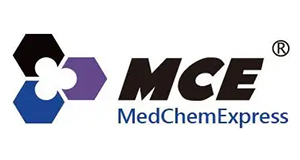Bepotastine, CAS 125602-71-3
Bepotastine, CAS 125602-71-3
Artikelnummer
MEXHY-I0021-25
Verpackungseinheit
25 mg
Hersteller
MedChemExpress
Verfügbarkeit:
wird geladen...
Preis wird geladen...
Product Description: Bepotastine is a selective and orally active second-generation histamine H1 receptor antagonist, can suppress the expression of nerve growth factor (NGF). Bepotastine has the potential for allergic rhinitis, allergic conjunctivitis and urticaria/pruritus research[1][2][3][4].
Applications: Metabolism-protein/nucleotide metabolism
Formula: C21H25ClN2O3
References: [1]Jon I Williams, et al. Non-clinical pharmacology, pharmacokinetics, and safety findings for the antihistamine bepotastine besilate. Curr Med Res Opin. 2010 Oct;26(10):2329-38./[2]Kida T, et al. Bepotastine besilate, a highly selective histamine H(1) receptor antagonist, suppresses vascular hyperpermeability and eosinophil recruitment in in vitro and in vivo experimental allergic conjunctivitis models. Exp Eye Res. 2010 Jul;91(1):85-91. /[3]Tanizaki H, et al. Oral administration of bepotastine besilate suppressed scratching behavior of atopic dermatitis model NC/Nga mice. Int Arch Allergy Immunol. 2008;145(4):277-82./[4]Kamata Y, et al. Bepotastine besilate downregulates the expression of nerve elongation factors in normal human epidermal keratinocytes. J Dermatol Sci. 2018 Apr 23:S0923-1811(18)30186-5.
CAS Number: 125602-71-3
Molecular Weight: 388.89
Compound Purity: 98.12
Research Area: Endocrinology; Inflammation/Immunology
Solubility: DMSO : 100 mg/mL (ultrasonic)/H2O : ≥ 100 mg/mL
Target: Histamine Receptor
Applications: Metabolism-protein/nucleotide metabolism
Formula: C21H25ClN2O3
References: [1]Jon I Williams, et al. Non-clinical pharmacology, pharmacokinetics, and safety findings for the antihistamine bepotastine besilate. Curr Med Res Opin. 2010 Oct;26(10):2329-38./[2]Kida T, et al. Bepotastine besilate, a highly selective histamine H(1) receptor antagonist, suppresses vascular hyperpermeability and eosinophil recruitment in in vitro and in vivo experimental allergic conjunctivitis models. Exp Eye Res. 2010 Jul;91(1):85-91. /[3]Tanizaki H, et al. Oral administration of bepotastine besilate suppressed scratching behavior of atopic dermatitis model NC/Nga mice. Int Arch Allergy Immunol. 2008;145(4):277-82./[4]Kamata Y, et al. Bepotastine besilate downregulates the expression of nerve elongation factors in normal human epidermal keratinocytes. J Dermatol Sci. 2018 Apr 23:S0923-1811(18)30186-5.
CAS Number: 125602-71-3
Molecular Weight: 388.89
Compound Purity: 98.12
Research Area: Endocrinology; Inflammation/Immunology
Solubility: DMSO : 100 mg/mL (ultrasonic)/H2O : ≥ 100 mg/mL
Target: Histamine Receptor

 English
English









